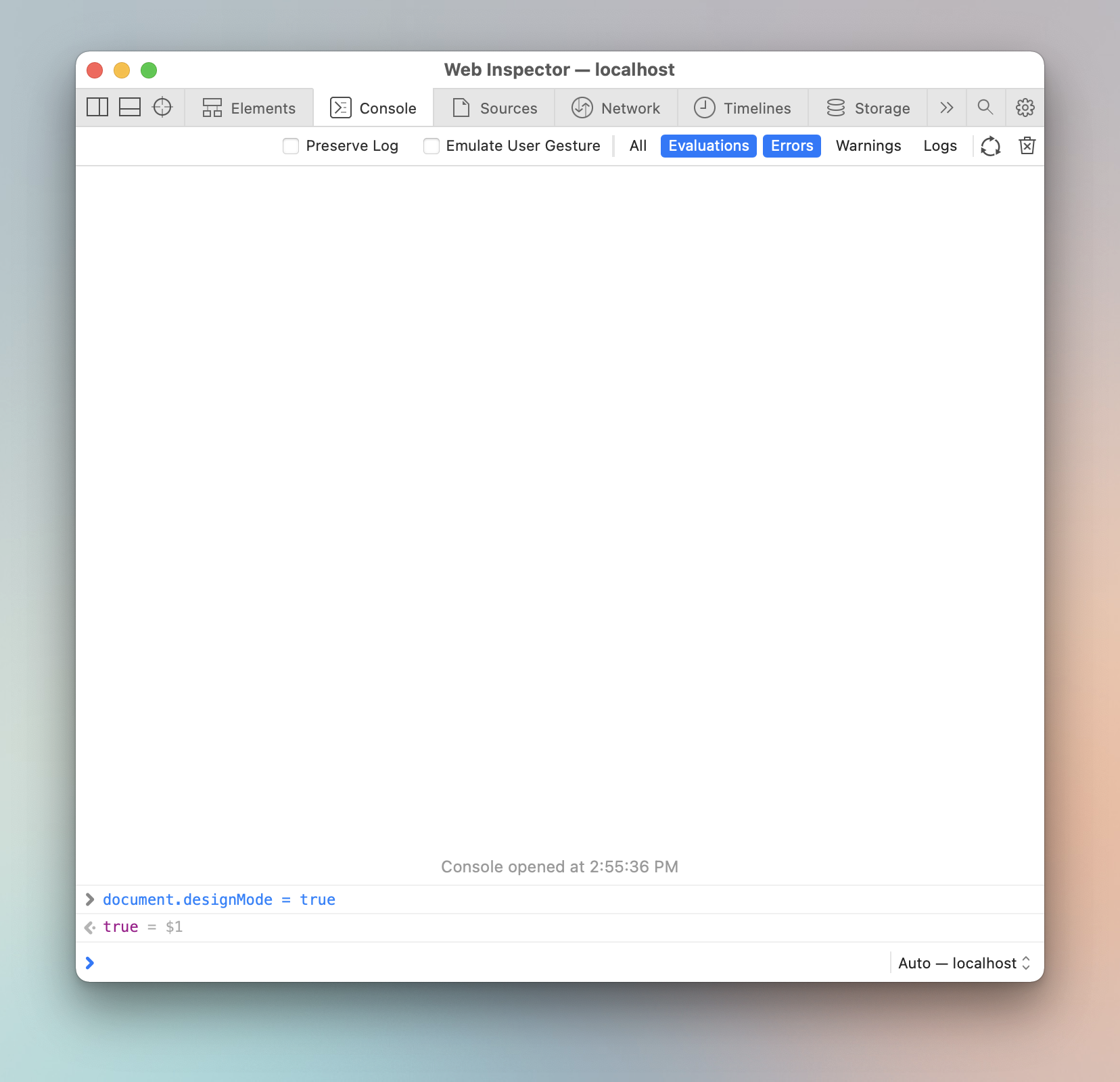What is IIFE?
Warning!
This article may contain outdated information, as it is more than two years old.
You might have heard of IIFE if you’ve been dabbling with JavaScript for a little while. You might have used it in a javascript: bookmarklet, or maybe you’ve used a bundler such as Rollup that exports to IIFE.
So what even is IIFE?
Immediately Invoked Function Expressions (IIFE) is a format for JavaScript that runs code inside a container shell of a function that runs immediately after its expression. The basic format is like this:
(() => {
"use strict";
// Your wonderful JavaScript code inside
})();But why do you need the wrapper of a function? Can’t you just put the code just as is inside?
Bookmarklets #
Bookmarklets are little snippets of JavaScript code that you can put in your bookmarks bar with a javascript: prefix before it so that it can run normally. It;s a wonderful little feature of browsers.
But… Take an example of setting document.designMode to true. When you do that in a bookmarklet, it would become problematic because browsers automatically write the returned value to the document, which is not ideal since many JavaScript expressions do return values inadvertently.

When you wrap all of that in an IIFE, however, the return value is contained inside the IIFE, and the returnn value will only be the return value of the IIFE itself, which is empty air.
Nice. But that’s not the main reason why people use IIFEs in websites. The most important reason is…
Closures #
A closure is the combination of a function bundled together (enclosed) with references to its surrounding state (the lexical environment).
In JavaScript, closures are created every time a function is created, at function creation time. Which means that you get a separate closure when you run an IIFE.
That in turn means that the variables that you define inside your code, using let, const, or var, will all be scoped just to the code block of the IIFE. let and const are block-scoped, meaning that they’ll be containned in any block (including function), and var is function- or global-scoped, which here means that it will be contained innside the IIFE, which is a function. This can extremely useful for browser ennviroments, in which you might wannt scripts to run independently without interefering with each other.
Conclusion #
Please use IIFEs whenn you want to contain variables into a script (e.g. a browser context, runninng lots of <script>s on a single page or omit the return value in order to prevent annoying browser behavior.
That’s all for this article - thanks for reading!